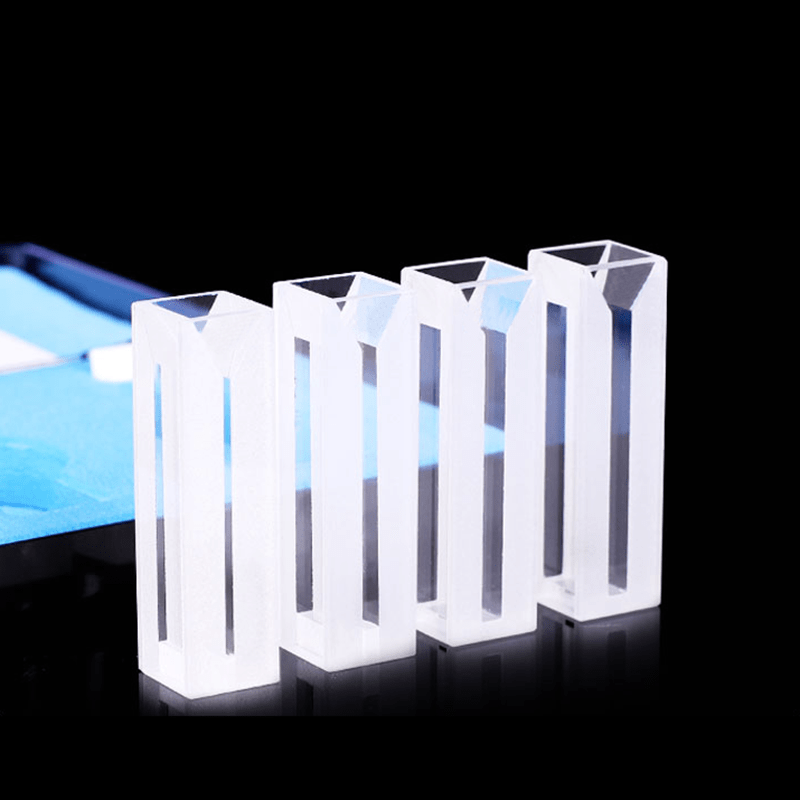Why Cuvettes Are Needed for Precise Measurements in Labs
Why Cuvettes Are Needed for Precise Measurements in Labs
Blog Article

The Great things about Cuvettes and Quartz Vials in Scientific Study
In medical study, the precision and reliability of measurements are paramount, particularly in areas like spectroscopy, substance examination, and biology. One important factor that assures precision in these reports could be the cuvette, specially quartz vials. Understanding the advantages of cuvettes and the advantages of applying quartz vials can considerably affect the results of tests and laboratory work.
Accuracy in Spectroscopy
Cuvettes are important for keeping water samples in various diagnostic tools, such as spectrophotometers. These units gauge the absorbance or transmission of gentle through a sample, and the cuvette provides because the container for the sample during analysis. The size and substance of the cuvette play an essential position in ensuring the accuracy of the measurements. Quartz vials, exclusively, provide exemplary visual quality, permitting accurate light indication across a wide variety of wavelengths, including uv (UV) light. That makes quartz vials a fantastic choice for spectroscopic studies, wherever accuracy is critical.
Longevity and Compound Opposition
Quartz vials stick out because of their toughness and weight to tough chemicals. Unlike plastic cuvettes, quartz vials are less likely to weaken or respond with substances in the test, ensuring that the outcomes of the experiment remain unaffected by potential contamination. This quality makes quartz vials particularly of use in conditions wherever intense solvents or large temperatures are involved. Their ability to endure intense conditions without diminishing the integrity of the trial is one of the main reasons they are favored in several laboratory applications.
Reliability in Size and Form
The size of a cuvette is not a one-size-fits-all situation. The dimension of the cuvette, such as for example their journey length, influences the amount of the taste and the quantity of mild that moves through. Selecting the correct cuvette size for the specific test assures that the results are maybe not skewed due to below or over-concentration of the sample. Quartz vials come in a number of measurements and patterns, enabling analysts to choose probably the most proper selection based on the requirements of these experiment. This freedom plays a role in more exact information and permits greater get a handle on around fresh conditions.
Transparency and Light Indication
Quartz is noted for their exceptional openness, particularly in the uv (UV) and obvious mild spectra. That makes quartz vials perfect for use in tools that require apparent optical paths, such as for example UV-Vis spectrophotometers. The superior light indication attributes of quartz make certain that the light passes through the taste with small scattering or consumption, ultimately causing more appropriate readings. For tests that need high accuracy, quartz vials give a definite advantage around other materials.
Long-Term Stability
When employed in research labs, it is essential to own trusted resources that keep their reliability over time. Quartz vials aren't just chemically resilient but also extremely tough, meaning they're less likely to experience wear and tear. That long-term reliability assures that analysts may use quartz vials for lengthy periods without worrying about destruction or the requirement for frequent alternatives, causing cost-effectiveness in the extended run.
In conclusion, equally cuvettes and quartz vials offer a range of benefits that improve the standard and accuracy of laboratory experiments. From their superior optical quality with their chemical resistance and longevity, these methods are essential in scientific research. By choosing the proper cuvette size and applying quartz vials, experts may guarantee accurate proportions and achieve more trusted effects in their studies. Report this page